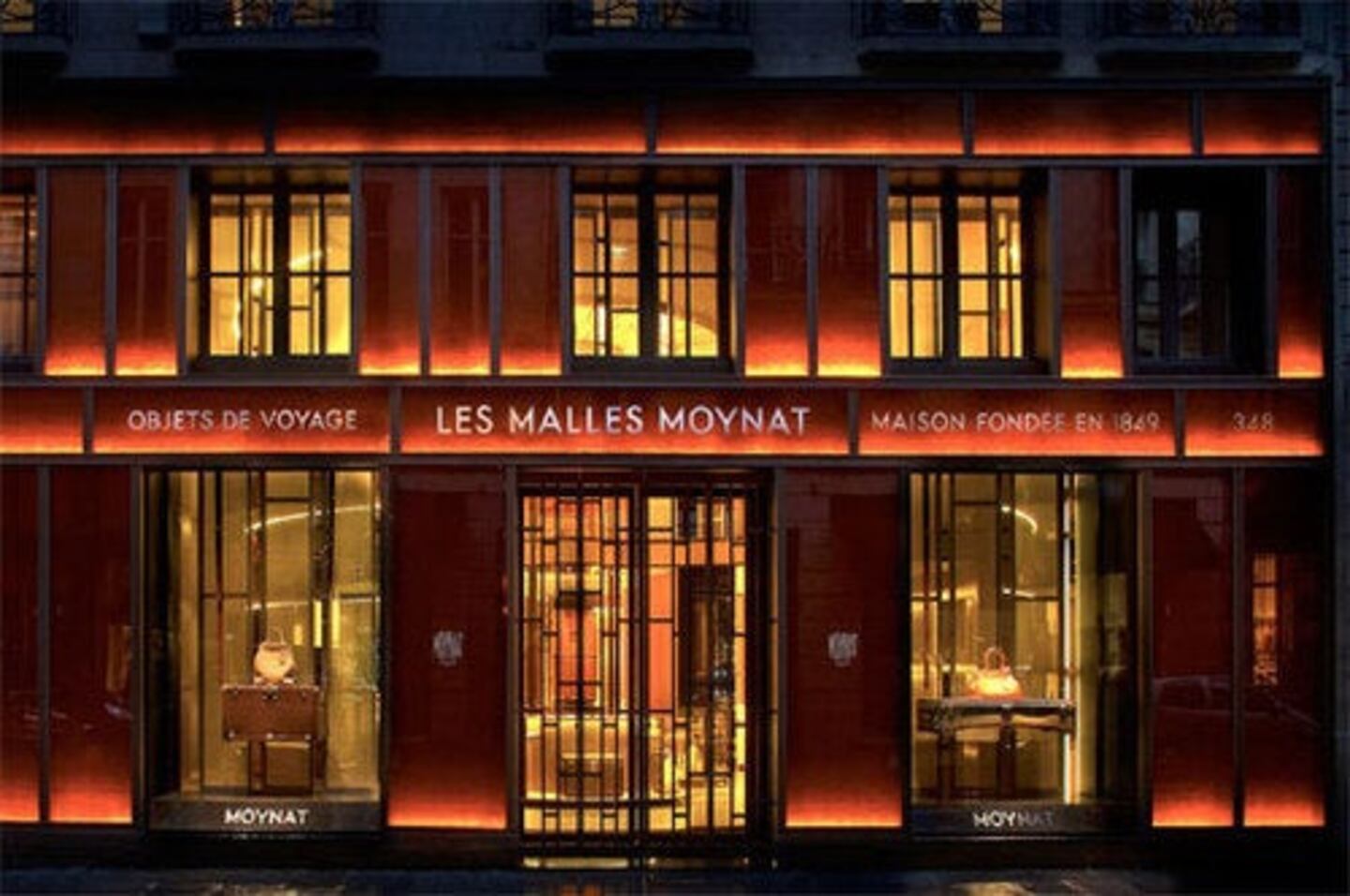
The Business of Fashion
Agenda-setting intelligence, analysis and advice for the global fashion community.

Agenda-setting intelligence, analysis and advice for the global fashion community.

PARIS, France — "Would you like me to tell you about the brand's heritage?" a velvet-gloved salesman in a bespoke suit asks every visitor who crosses the threshold of the Moynat leather goods store which opened a few months ago on rue Saint Honoré, a step away from the trendy Hotel Costes. An affirmative answer prompts a long and winding story that starts with the inception of the brand in 1849, accompanied by a book of pictures bound in ornate orange card that is given to all visitors to the store. In theory, the bags on display could speak for themselves. Even an untrained eye can appreciate their exceptional level of finish. So why bother wasting time on history?
Although the house was founded more than 150 years ago and became famous for luggage especially suited to the automobile, this is now the only Moynat store in the world. Indeed, for the past three decades, the brand was dormant. And that’s a sufficient length of time for people to forget.
Last year, LVMH chairman Bernard Arnault acquired the rights to Moynat via Groupe Arnault and began to awaken the brand from its long hibernation. Despite the fact that the name and logo are the only real connection between the designs of Moynat's past and those of its present incarnation, the relaunch reflects an important trend happening across the fashion industry: major luxury groups seem to prefer reviving fashion houses with thick roots, rather than setting up new brands.
Berluti, a French men's shoe and leather goods company founded in 1895 by an Italian cobbler and known for its meticulously handmade shoes and highly selective distribution, is another example. LVMH acquired the brand back in 1993. But earlier this year, at men's fashion week, Berluti revealed the fruits of a new strategy. While shoes were still at the heart of the collection, new designer Alessandro Sartori, formerly of Zegna, expanded the range into areas completely foreign to the Berluti heritage, including suits and tailored garments, leather coats and accessories. The brand's distribution is also set to expand significantly in the near future, as Berluti aims to become a central, stylish player in the growing market for men's fashion and perhaps even compete with fashion houses like Gucci or Zegna.
ADVERTISEMENT
Then there's the case of Belstaff, which last summer was acquired by Labelux, together with Tommy Hilfiger and Harry Slatkin. Founded in Longton in 1924 and known for its coated, water repellent fabrics and iconic four-pocket jacket, tied at the waist, the brand has all the right ingredients to threaten more established British heritage brands like Burberry. Indeed, earlier this year at London Fashion Week, Labelux relaunched Belstaff with an Autumn/Winter 2012 collection designed by Martin Cooper, formerly design director at Burberry, where he worked for more than 16 years. Slim leather trousers with chic motorcycling details, for both men and women, were paired with a breathtaking collection of coats that made use of exceptional materials, from PVC to exotic skins, in dramatic and powerful silhouettes, which referenced the 1930's and 40's. The accessories collection was also broadened and featured items made of snake or crocodile leathers.
But the recent Moynat, Berluti and Belstaff moves, which give new personalities to existing brands, prompt a critical question: given that acquiring rights and poaching top design talent come with significant costs, why not start from scratch? Why not invent a new label or invest in a young designer? About a decade ago, Gucci Group did just that, launching Stella McCartney and Alexander McQueen. But today, these cases are extremely rare and financial support is much more likely to flow towards fashion brands with a history. Why?
The answer lies in a single word: authenticity. In an age of rapid globalisation and fast fashion, when high street retailers sell instant copies of runway trends and designer collaborations with cheap-chic chains abound, consumers crave what is authentic. And you cannot fake history.
"The more contrived the world seems, the more we all demand what's real," argue James Gilmore and Joseph Pine in their seminal book Authenticity: What Consumers Really Want. "As reality is qualified, altered and commercialised, consumers respond to what is engaging, personal, memorable — and above all, authentic."
And when the primary thing that distinguishes one bag from another is the story told about it, buying a history that’s ripe for revival is much easier than building a new one. It's the authenticity that's the hardest thing to capture.
Liroy Choufan is a consultant and reporter based in Israel. This article was originally published in Hebrew at http://fashion.walla.co.il/
From analysis of the global fashion and beauty industries to career and personal advice, BoF’s founder and CEO, Imran Amed, will be answering your questions on Sunday, February 18, 2024 during London Fashion Week.
The State of Fashion 2024 breaks down the 10 themes that will define the industry in the year ahead.
Imran Amed reviews the most important fashion stories of the year and shares his predictions on what this means for the industry in 2024.
After three days of inspiring talks, guests closed out BoF’s gathering for big thinkers with a black tie gala followed by an intimate performance from Rita Ora — guest starring Billy Porter.